Comments / Questions (23)
![]() GUILAINE wrote:
GUILAINE wrote:
Bonjour, je ne comprend pas l'explication pour le bord du chapeau, aprés avoir effectuer 19-20 cm "2ms dans les 2 m suivantes, 2ms dans la m suivante" et répéter ce qui pour moi voudrait dire qu'il faudrait faire 2ms dans CHAQUE m tous le tour? c'est confus .. merci de me répondre
14.11.2025 - 16:10DROPS Design answered:
Bonjour Guilaine, effectivement, on va ici crocheter 2 ms soit 1 ms dans chacune des 2 ms suivantes et 2 ms dans la ms suivante = on augmente 1 ms toutes les 3 m, je modifie le texte pour qu'il soit plus facile à comprendre. Bon crochet!
14.11.2025 - 16:26
![]() Thierry Florence wrote:
Thierry Florence wrote:
Bonjour je ne trouve pas les explications du chapeau. Cordialement Florence
25.07.2025 - 16:40DROPS Design answered:
Bonjour Florence, les explications du chapeau se trouvent en bas, apres le pull, a voir ICI. Bon crochet!
25.07.2025 - 17:20
![]() Anette wrote:
Anette wrote:
Undrar var mönstret till hatten finns?
06.03.2025 - 17:28
![]() Marquita wrote:
Marquita wrote:
I can’t understand the structured pattern. The YOs double the number of stitches and there are no ‘knit 2 tog’ to compensate. What is 1YO, rather than simply YO? I’m obviously missing something!
12.07.2024 - 15:26DROPS Design answered:
Dear Marguita, the annswer to your question is there in the pattern desrcipton in the 3d and the 5th row... (3rd row: *K 1, SLIP yo from previous row *). In other words the yarnpovers should be slipped off in the next row/round thus creating looser, elongated stitches. Happy Stitching!
16.07.2024 - 00:43
![]() Britt Hagstrand wrote:
Britt Hagstrand wrote:
Hej, enligt omvandlaren skulle 600 gr räcka i BomullLin. Stämmer det med tanke på att det står 17x22 på det garnet och i mönstret 69-21, Ribbon, 650 gr och 13x22v.?
29.06.2021 - 13:49DROPS Design answered:
Hej Britt, det skall räcka om du håller samma stickfasthet som det står i mönstret. Mönstret är glest med endast 13 m på 10 cm :)
30.06.2021 - 13:44
![]() Maren wrote:
Maren wrote:
Hallo liebes Team, Ich Häkel gerade den Hut und bin fast fertig. Meine Fragen: was sind Rückwendlichstiche ? Verstehe ich es richtig, dass man die Hutkrempe am Ende (nach dem häkeln) nach außen Klappt und den dann äußeren Rand mit diesen rückwendlichstichen bearbeitet? Dann stößt aber die ursprünglich letzte Reihe (krausrippen) an den äußeren Hutrand und dort ist es offen. 🤔 Bitte um Hilfe. Dankeschön. Herzliche Grüße Maren
24.01.2021 - 08:31DROPS Design answered:
Liebe Maren, die Anleitung für den Hut wurde noch mal neu übersetzt, vielleicht wird es dadurch klarer. Sie schlagen an der Hutkrempe nur die letzten 2 Rd nach oben um und nähen diese dann im Steppstich fest (mit "Rückwendlingsstichen" in der alten Übersetzung ist der Steppstich gemeint). Gutes Gelingen weiterhin!
25.01.2021 - 10:50
![]() Jan C wrote:
Jan C wrote:
Hi, I am still working on the sweater, I am at the sleeve cap, making a size medium. The directions say to bind off 2 stitches every other row 2 times, which is 8 stitches total, then to bind off 1 stitches every other row 11 times, which is 22 stitches at this point my length is around what you indicate as the total length and I have not bound off the next part(2 stitches every other row) I have 22 stitches left on the needle. I think where the directions say 5-11-14 is confusing? HELP
04.04.2020 - 22:41DROPS Design answered:
Hi Jan, You bind off 2 stitches x 2 = 4 and 1 stitch x 11 = 11. Then you bind off 2 stitches every other row to the correct length. Happy knitting!
06.04.2020 - 07:57
![]() Christine Sherriffs wrote:
Christine Sherriffs wrote:
Thank you GarnStudio for all of your answers. Since I had to rip out both the front and the back because of doing the decrease rows incorrectly. I am now knitting with kinky cotton and it is clearly stretched and you can see the difference where I did not have to rip out. Will the kinky cotton relax once the sweater is blocked? Or should I just shelve this project? Thank you for your honesty. I’m working with the Drops Paris 100% cotton. Again. Thank you for your help.
04.03.2020 - 23:09DROPS Design answered:
Dear Christinge, wet blocking will even out your knitting. Soak the piece into lukewarm water, press the water out and then pull the piece into shape, and let it completely dry. Happy Kntiing!
05.03.2020 - 01:59
![]() Christine Sherriffs wrote:
Christine Sherriffs wrote:
So sleeve cap decrease. S/b dec 2 stitches at each end of row 3 times and 1 stitch at each end 5 times I’m sorry to be a pain and I truly appreciate your responses.
03.03.2020 - 17:23DROPS Design answered:
Dear Mrs Sherriffs, if you are working 1st size you will cast off: 2 stitches at the beg of next 6 rows (= 2 sts 3 times on each side), then 1 stitch at the beg of next 10 rows (= 1 st 5 times on each side) then cast off 2 stitches at the beg of every row until sleeve measures 54 cm (number of times will depend on your tension in height, just make sure you cast off the same number of times from RS + from WS). Then cast off remaining stitches. Hope this helps :) Happy knitting!
04.03.2020 - 08:42
![]() Christine Sherriffs wrote:
Christine Sherriffs wrote:
So really then, the decreases are done at the beginning and end of each row , correct?
03.03.2020 - 16:18DROPS Design answered:
Hi Christine, Yes the decreases are at the beginning and end of each decrease-row. Happy knitting!
04.03.2020 - 08:19
DROPS 69-21 |
|
|
|
|
DROPS Pullover in Ribbon. Crocheted hat in Muskat.
DROPS 69-21 |
|
|
Gauge: 13 sts x 22 rows in pattern = 10 x 10 cm [4" x 4"]. Pattern: Row 1 (right side): P Row 2 (wrong side): * P 1, yo *, repeat from * - *. Row 3: * K 1, let yo from previous row drop *, repeat from * - *. Row 4: K Row 5: * K 1, yo *, repeat from * - *. Row 6: * P 1, let yo from previous row drop *, repeat from * - *. Repeat rows 1 - 6. Garter st, when knitting flat: Knit all sts, all rows. Garter st, when knitting in the round: *Rnd 1, knit. Rnd 2, purl.* Repeat from * - *. Knitting tip: Ribbon has a tendency to twist when knit. For best results, untwist the yarn as you go along. NOTE: All measurements in the pattern refer to the garment measured when held up or worn. This is because the pattern pulls in and lengthens. Front: Cast on 76-82-90 sts on smaller needles and knit 6 rows garter st. Put 5 sts at each side on a st holder (these 5 sts will be knit in garter st and sewn to Body afterwards) = 66-72-80 sts on needles. Continue with pattern - see instructions above. When the piece measures approx. 20 cm [7⅞"] cast on 6 sts at each side = 78-84-92 sts. Continue pattern over all sts. When the piece measures 52-54-55 cm [20.5" - 21.25" - 21⅝"] bind off for armhole at each side every other row: 3 sts 1-1-1 time, 2 sts 2-4-5 times, 1 st 4-3-4 times = 56-56-58 sts. When the piece measures 65-66-67 cm [25⅝" - 26" - 26⅜"] bind off the center 12 sts for the neck. Then bind off at each neck edge every other row: 2 sts 1-1-1 time and 1 st 5-5-6 times. When the piece measures 71-73-75 cm [28" - 28.75" - 29.5"] knit 2 rows garter st over all sts and then bind off all sts. The piece measures approx. 72-74-76 cm [28.25" - 29⅛" - 29⅞"]. Back: Cast on and knit the same as the front. Bind off for armhole as on front and continue until the piece measures 70-72-74 cm [ 27⅝" - 28.25" - 20⅛"]. Bind off the center 22-22-24 sts for the neck. On the next row bind off 2 sts at each neck edge. Knit 2 rows garter st when the piece measures 71-73-75 cm [28" - 28.75" - 29.5"] and then bind off remaining 15 sts on each shoulder. The piece measures approx. 72-74-76 cm [28.25" - 29⅛" - 29⅞"]. Sleeve: Cast on 30-32-34 sts. Knit 6 rows garter st, then change to pattern. When the piece measures 9 cm [3.5"] inc 1 st at each side 11-10-10 times every 3 cm [1.25"] = 52-52-54 sts. When sleeve measures 44-42-40 cm [17.25" - 16.5" - 15.75"] bind off for sleeve cap at each side every other row: 2 sts 3-2-1 times, 1 st 5-11-14 times, then bind off 2 sts at each side every other row until the piece measures 54-55-55 cm [21.25" - 21⅝" - 21⅝"]. Bind off the remaining sts. Assembly: Put the 5 sts from st holders on each side on needles. Knit garter st over all sts for approx. 20 cm [7⅞"] (match length of side slit), bind off. Sew garter st band to Body. Sew right shoulder. Pick up approx. 75 to 80 sts around the neck. Knit 4 rows garter st, bind off. Sew left shoulder and up along neckband. Sew in sleeves. Sew sleeve and side seams using edge sts as seam allowance – begin side seams above side slit. CROCHETED HAT IN MUSKAT: Sizes: S/M - M/L Head measurement: 55 - 57 cm [21⅝" - 22.5"] Materials: Garnstudio MUSKAT from Garnstudio 100% mercerized Egyptian cotton, 50 g./100 m./109 yards 200-200 g. col. no. 61, light beige. DROPS 3 mm [US C] crochet hook, or size needed to obtain correct gauge. Crochet gauge: 21 sc x 24 rows = 10 x 10 cm [4" x 4"] Reverse crochet: Crochet sc on right side of work, from left to right without turning work. Crochet 1 sc in every sc from previous row. Hat: Ch 4 and join into a ring with 1 sl st. Ch 1, 6 sc in the ring, ch 1 to turn. 1st row: 2 sc in every sc from previous row = 12 sc, put a marker at start of row. 2nd row: * 1 sc in first sc, 2 sc in the next sc *, repeat from * - * = 18 sc. 3rd row: * 1 sc in the first 2 sc , 2 sc in the next sc *, repeat from * - * = 24 sc. 4th row: * 1 sc in the first 3 sc, 2 sc in the next sc *, repeat from * - * = 30 sc. 5th row: * 1 sc in the first 4 sc, 2 sc in the next sc *, repeat from * - * = 36 sc. Continue in this manner, increasing 6 sc per row - work 1 sc more between each inc on successive rows - until the piece measures 9.5-10.5 cm [3.75" - 4⅛"] from ring (the circumference will inc approx. 2 cm [0.75"] every row - continue until circumference = approx. 55-57 cm [21⅝" - 22.5"]). Then continue with sc without increasing until piece measures approx. 19-20 cm [7.5" - 7⅞"] from center. On the next row inc as follows: * 2 sc, 2 sc in the next sc *, repeat from * *. Then work 22 rows without increasing =hat brim. Work 1 row reverse crochet around edge - see instructions above. Cut yarn and fasten off. Assembly: Make a small double edge (= rolled edge) on the outside of hat at the top as follows: with right side out, at the point you stop increasing make a fold and work a row of sc over the 2 layers. Crochet over 2 rows of sc each side of fold, so that 4 rows sc are worked into the rolled edge. Fold hat brim (the last 22 rows) double to the right side. Attach edge to hat over 2 rows of sc in the same manner as the rolled edge. |
|
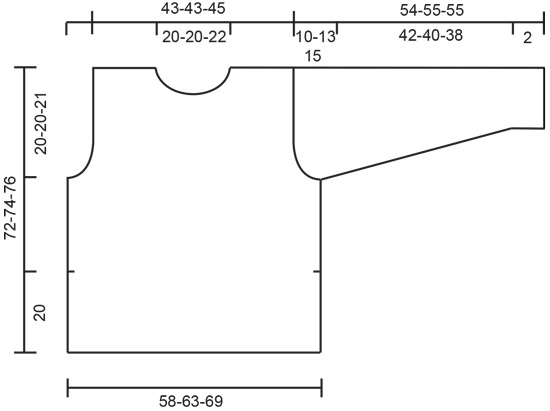 |
|
Have you finished this pattern?Tag your pictures with #dropspattern or submit them to the #dropsfan gallery. Do you need help with this pattern?You'll find 21 tutorial videos, a Comments/Questions area and more by visiting the pattern on garnstudio.com. © 1982-2025 DROPS Design A/S. We reserve all rights. This document, including all its sub-sections, has copyrights. Read more about what you can do with our patterns at the bottom of each pattern on our site. |


















































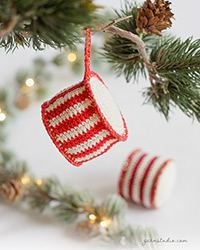
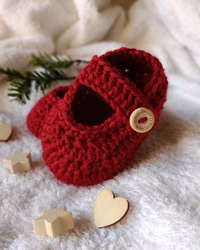
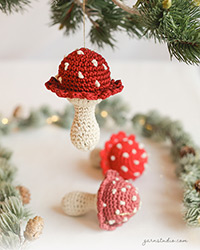
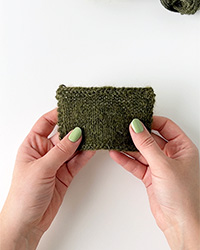

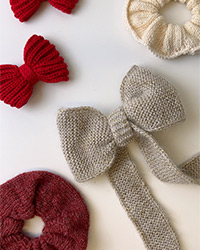
Post a comment to pattern DROPS 69-21
We would love to hear what you have to say about this pattern!
If you want to leave a question, please make sure you select the correct category in the form below, to speed up the answering process. Required fields are marked *.